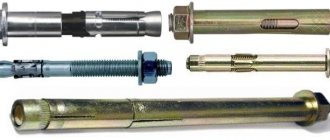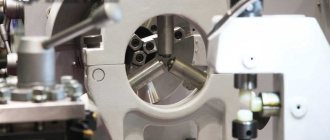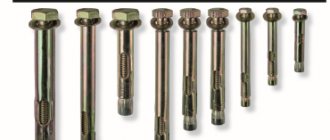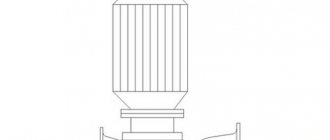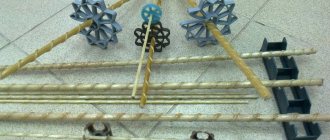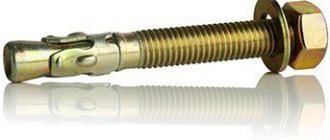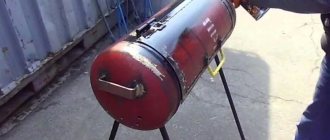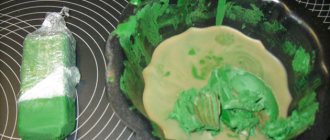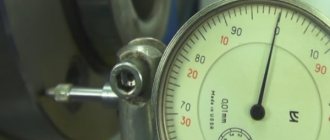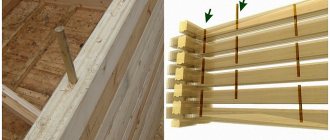What is a bolt?
A bolt is a cylindrical threaded rod, on one side of which there is a head for easy screwing. The bolted connection is ensured by screwing the described element into the nut. Depending on the type of connection, a flat washer may be placed under the head or nut.
The first threaded bolts appeared in the 15th century. It must be said that until this time threadless bolts were used, but the scope of their use was extremely small. Gutenberg, in his revolutionary design of the printing press, already used a screw connection. Afterwards, screws were widely used for the manufacture of clock mechanisms and military armor. Even the famous Leonardo da Vinci described screw-cutting machines in his notebooks.
The first such machine was created only in 1568. This made it possible to produce various types of bolts and expanded the scope of application of this fastener. But the main success of the screw connection was the invention of the nut. The first nuts were made by hand. What served as an obstacle to their widespread use. But when the process of making nuts was automated, the proliferation of bolted joints accelerated.
Types of threaded fastening
To make a threaded connection, you need at least two parts, one of which has an external thread and the other has an internal thread. There are several structural types of threads.
Bolted
Through holes are drilled in the parts to be connected, after which a bolt is inserted inside, which is tightened on the other side with a nut.
Screw
In this type of connection, the role of the nut is played by the part itself, in which a hole is first drilled, then a thread is applied, after which another part is fastened using a bolt or screw. If you use self-tapping screws, then it is not necessary to drill a preliminary hole, since the part itself automatically makes a thread when screwed.
Using studs
One end of such a pin is screwed into the component part, and a suitable nut is screwed onto the second in a special way.
Important bolt parameters
The main differences between bolts are:
- Head size and shape;
- The shape of the cylindrical part;
- Thread type and pitch;
- Strength;
- Material of manufacture.
Head shape and dimensions
Depending on the scope of use and application in various designs, such hardware can have a round, square or oval head shape. But the most popular shape of this part of the bolt is the hexagon. Thanks to heads of such shapes, it is easier to assemble a screw connection.
There are also special forms of heads: semicircular, countersunk, with a hole (eye bolts), hinged, fork-shaped, etc. In addition to different shapes, they can have different sizes.
Shape of the rod
The bolt shafts also have different shapes. They can be threaded along the entire length or only part of it. The diameter of the smooth part may exceed the diameter of the threaded part, etc. Stepped shank bolts are used to create heavily loaded connections. But the most popular are those fasteners with the same size threads and the rest of the hardware.
Thread type and pitch
Bolt threads can have different pitches, sides, profiles and other varieties. The most important parameters of thread cutting are its profile and size.
Strength class and materials of manufacture
The strength class of threaded connections means the tensile strength limit of the product. The strength class of these hardware depends on the mechanical properties of the product and is divided into 11 categories. By and large, this parameter is determined by the material used to make the bolts. They can be made from:
- Ordinary steels;
- Structural alloy and low alloy steels;
- Stainless steels and heat-resistant steels;
- Brass, copper, titanium and titanium alloys.
Main Differences
Above we discussed the main characteristics of threaded fasteners used for various purposes. It remains to find out how a threaded bolt differs from a screw. Both of them have a stem with threaded external threads. The differently shaped head is practically the same in both cases.
Remembering the purpose of the fastener, it is worth noting that the screw is oriented to connect the parts by tightening them, and the bolt, in addition to tightening, should also prevent the parts from moving relative to each other. This is the main difference between a threaded bolt and a screw. The bolt has a thickening between the head and the threaded part, and the screw has a thread that fits into the head itself. This is the main and only difference; otherwise the screw and bolt are identical. This difference between a threaded bolt and a screw determines the application of both fasteners.
Application of bolts
The scope of use of hardware is huge. This connection is used in agricultural machinery for attaching attachments. In furniture making, bolts of a special design are used. This connection is used:
- on construction sites;
- in production;
- in mechanical engineering;
- in the manufacture of various devices;
- in car assembly.
Bolted connections have virtually no limitations. Hex bolts are used to fasten beams during the construction of wooden houses. In most cases, high-strength bolts are used. They provide a reliable and durable connection.
In construction, such fasteners with enlarged heads are often used. They are used in the construction of residential buildings and industrial facilities. Connections on such hardware can be found in the construction of tunnels, bridges and other objects where tensile strength and other qualities provided by this type of connection are important.
Bolts are widely used in railway transport. Depending on the place of application, hardware of varying degrees of strength is used. They may have semicircular or square heads. Often this connection is used in the assembly of metal railway fences. To protect against aggressive environmental influences, the bolts are coated with zinc alloy.
Today it is estimated that up to 90 bolts are used in a mobile phone, up to 130 in a washing machine, and about 4000 in a car. Bolted connections are used in almost all modern mechanisms. This type of hardware plays an important role in modern prefabricated structures. Thanks to the connection they provide, the assembly of any structure does not take as much time as when using welded joints.
Scheme for deciphering bolt symbols
The bolt symbol is presented in the form of a long list of numbers and letters, each of which indicates a specific parameter of the product. This information is provided on the manufacturer's factory packaging and provides comprehensive information about the part.
At first glance, it may seem that it is very difficult to decipher what is indicated on the packaging, but this is not so. All designations are in a certain order and characterize a separate parameter of the product. One of the most commonly used quality standards is GOST 7798-70; it describes the main parameters of hex head bolts. Let's look at decrypting a recording using an example.
Types of bolts by size and head shape
Head sizes may also vary. For example, a hex head can be either normal, standard size, or reduced or enlarged. The head profile also varies.
Some bolts have a semicircular shape, and there are also bolts that have a round head with a hole inside. There are bolts with a hidden head, for example, for assembling furniture.
By accuracy class
According to the accuracy class, the following types of bolts and nuts are distinguished:
- Accuracy class A - the design of bolts of this class provides for their installation in the provided hole in such a way that there is no gap left between the rod and the hole. Initially, the diameter of the hole should be smaller than the diameter of the rod, then it is gradually bored to the required dimensions until the bolt fits tightly. The difference between the diameters cannot exceed 0.3 mm. Due to the great complexity of installation, this type is practically not used in everyday life. Most often they are found in precision engineering.
- Normal accuracy (class B) - the difference between the diameters of the bolt and the hole should not exceed 3 mm, while the diameter of the rod should not deviate from the norm by more than 0.52 mm.
- Class C - the tolerance range for the rod diameter is no more than 11 mm.
In construction and mechanical engineering, fasteners of normal accuracy are most often used.
General classification
There are many types of bolts. But the main classification consists of the following products:
- Anchor bolts, which are attached primarily to load-bearing foundations and are designed to maintain the integrity of any structure. Often such products are used as spacer dowels.
- Eye bolts, which, unlike other types of bolts, are not intended to connect a structure. They are used as the main or additional means for lifting loads. Quite often, such products can be seen on large machine tools.
- Universal bolts, which often have hex-shaped heads and are used to connect various structures. A wrench is often used to remove such fasteners.
- Bolts with welded flanges, which are used to connect structures subject to vibration. For example, some automobile or machine tools are connected with these types of fasteners.
In addition, there are other classifications that depend on the following:
- type of coating;
- material and strength;
- appointments;
- head shapes.
By thread type and pitch
For different types, several types of thread are used. Among the most common are the following:
- Metric - refers to a group of screw threads that are applied to the outer part of the rod. The shape of the grooves and protrusions forms an isosceles triangle. The parameters of this thread are measured in millimeters, which is why it got its name. This type of thread is the most common; most often it can be found using ordinary and anchor bolts.
- Inch - also has a triangular profile, the only difference is that its parameters are measured in fractions of an inch.
- Pipe.
- Trapezoidal - differs in the shape of the depressions and protrusions, which are not triangular, but trapezoidal. This allows you to create a large friction force, which does not allow the bolt to unscrew on its own during operation.
- Thrust – used for increased lateral loads; the cross-section has the shape of a right triangle.
- Rectangular - used in cases where fasteners must perform their functions under heavy loads.
